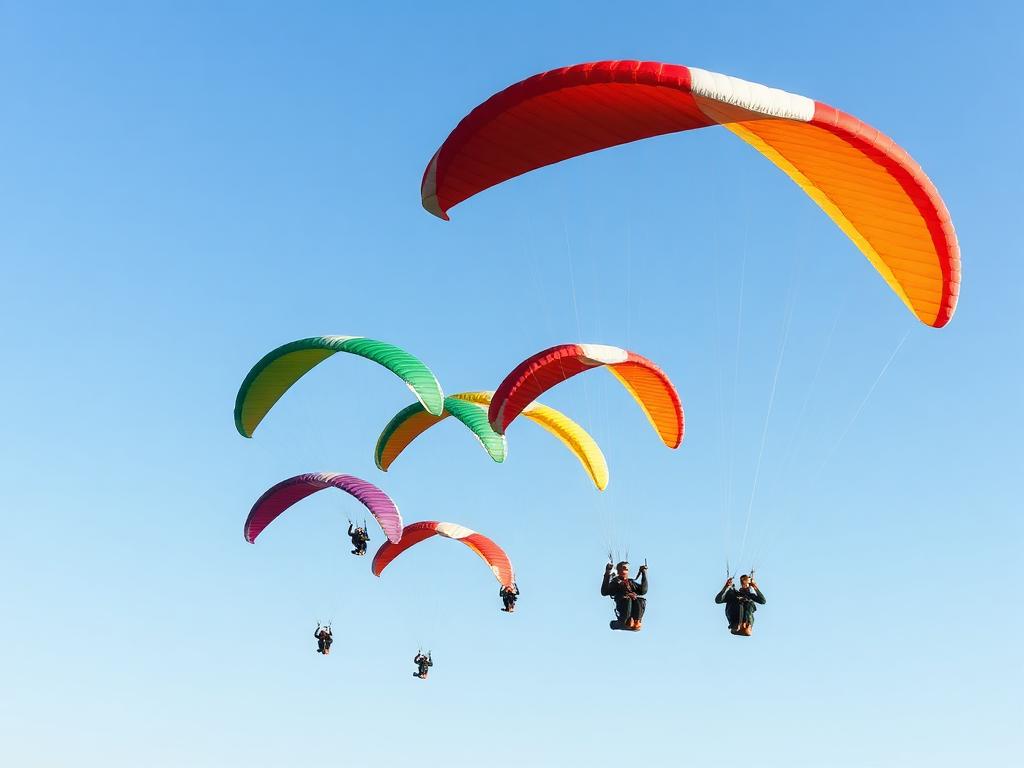Mental Preparation and Mindset
Competition success begins with mental preparation. World-class pilots develop systematic approaches to stress management, decision-making under pressure, and maintaining focus during long flights.
Visualization techniques help pilots prepare for various scenarios they might encounter during competition. Mentally rehearsing emergency procedures, tactical decisions, and challenging conditions builds confidence and improves performance.
Physical Conditioning
Modern competition flying demands excellent physical fitness. Long flights in challenging conditions require core strength, endurance, and the ability to maintain concentration for hours.
Many top pilots incorporate specific training routines including cardiovascular exercise, core strengthening, and flexibility work. Mental fatigue from prolonged concentration can be as limiting as physical fatigue.
Equipment Optimization
Competition pilots fine-tune every aspect of their equipment for maximum performance. Wing selection involves balancing performance against safety margins and pilot skill level.
Instrument setup is crucial for competition flying. Pilots need immediate access to critical information without being overwhelmed by data. Custom configurations help pilots access the information they need quickly during tactical situations.
Tactical Flying Skills
Reading other pilots is a crucial competition skill. Understanding when to follow other pilots and when to strike out independently can make the difference between winning and mid-pack finishes.
Gaggles (groups of pilots) create unique flying conditions with increased sink rates and modified thermal structure. Learning to fly efficiently in gaggles while positioning for tactical advantages requires specific skills.
Risk Management
Competition flying involves calculated risk-taking, but the best pilots excel at risk management rather than risk-taking. Understanding your personal limits and equipment capabilities is crucial for consistent performance.
Weather assessment becomes critical in competition. Pilots must make rapid decisions about changing conditions while balancing performance against safety. Conservative decisions often prove fastest in challenging conditions.
Task Strategy and Planning
Modern competitions use sophisticated task setting that rewards tactical thinking over pure speed. Understanding task committee psychology and likely task types helps pilots prepare appropriate strategies.
Pre-flight planning involves studying terrain, weather forecasts, and potential routes. Having multiple plans allows pilots to adapt to changing conditions during flight.
Navigation and Route Finding
Competition navigation requires precision and efficiency. Modern GPS systems provide sophisticated navigation aids, but pilots must understand how to use these tools effectively without becoming dependent on them.
Reading the landscape for thermal sources and wind patterns often provides better information than electronic instruments. The best competition pilots seamlessly integrate electronic and visual navigation techniques.
Thermal Flying Excellence
Competition thermal flying demands exceptional efficiency. Every second spent climbing slowly reduces overall speed. Top pilots can quickly assess thermal strength and make decisive centering and leaving decisions.
Understanding thermal structure and how it changes throughout the day helps pilots optimize their climbing strategy. Thermal selection becomes crucial when multiple options are available.
Glide Optimization
Maximizing glide performance requires understanding speed-to-fly theory and its practical application. Flying at optimal speeds for conditions can mean the difference between making goal and landing short.
Wind compensation and route planning must account for changing wind conditions throughout the flight. Small navigational errors compound over long distances.
Pressure and Stress Management
Competition pressure can negatively impact decision-making and flying performance. Developing coping strategies for stress helps maintain optimal performance under pressure.
Learning from mistakes without dwelling on them is crucial for competition success. Each flight provides learning opportunities that can improve future performance.
Building Competition Skills Progressively
Start with local competitions to develop competition experience in familiar conditions. Progress to larger events as your skills and confidence develop.
Flying with experienced competition pilots provides valuable learning opportunities. Observing their decision-making processes and flying techniques accelerates skill development.
Post-Flight Analysis
Detailed flight analysis using GPS tracks and weather data helps identify areas for improvement. Many top pilots spend as much time analyzing flights as they do flying.
Keeping detailed records of flying conditions, equipment performance, and tactical decisions builds a knowledge base for future competitions.
The Competition Community
The competition community is generally welcoming to new participants willing to learn and follow established protocols. Mentorship relationships with experienced pilots can dramatically accelerate development.
Understanding competition culture and etiquette is important for integration into the community. Respect for other pilots and positive attitudes contribute to everyone's enjoyment.
Whether your goal is world championship success or simply improving your flying skills, competition techniques and mindset can benefit every pilot. The systematic approach to improvement used by competition pilots provides a roadmap for excellence in all aspects of paragliding.
